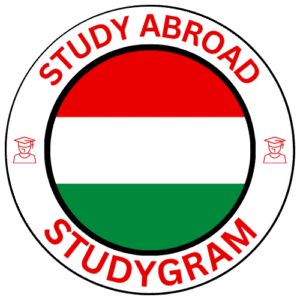.webp)
Connecting Students with Space Exploration at Széchenyi István University
On July 9th, Széchenyi István University in Győr hosted a groundbreaking event that bridged the gap between space science and young students’ curiosity. As part of the HUNOR (Hungarian to Orbit) programme, the university, alongside the Mobilis Interactive Exhibition Centre and the NMHH (National Media and Infocommunications Authority), organized the “Interstellar Connections Day.” This event marked a historic moment for Hungary: for the first time in 45 years, a Hungarian astronaut, Tibor Kapu, traveled into space, and students had a unique opportunity to interact with him live from the International Space Station (ISS).
Why Hungary’s Space Journey Matters for Students and Future Scientists
The HUNOR programme’s significance extends beyond national pride. It exemplifies Hungary’s commitment to advancing space exploration and inspiring the next generation of scientists, engineers, and explorers. The event was designed to foster educational engagement by connecting students directly with the space mission, thereby fueling their interest in STEM (science, technology, engineering, and mathematics) fields.
The participation of approximately 300 attendees, including primary and secondary school students, highlights the enthusiasm surrounding space science in Hungary. Dr. Orsolya Ferencz, Ministerial Commissioner for Space Research, emphasized that such missions not only showcase Hungarian talent on a global stage but also serve as vital educational tools. She stated, “Having a Hungarian astronaut conducting experiments aboard the ISS demonstrates that our country’s scientists and engineers are competing at the highest levels.”
Engaging Young Minds: Live Questions to Astronaut Tibor Kapu
The heart of the event was a live radio link that connected students with Tibor Kapu aboard the ISS. Sixteen carefully selected students from across Hungary posed questions on a variety of topics—from the personal dreams and everyday life in space to serious scientific issues like space debris, radiation, and the effects of microgravity on human health.
Questions ranged from playful inquiries, such as what Hungarian snack Kapu would take to space, to scientific ones about how space radiation affects the human body or how to protect satellites from debris. Kapu answered with credibility and openness, sharing insights into his experiences and explaining complex scientific concepts in a manner accessible to young students. The interaction concluded with an inspiring message: “We’re waiting for you at home!”—encouraging students to pursue careers in space science and exploration.
Educational and Scientific Programs Enhancing Space Awareness
The event included more than just the live Q&A. Educators and scientists delivered engaging lectures and conducted interactive demonstrations. Milán Molnár, a Mobilis demonstrator, replicated space conditions by performing experiments conducted by Kapu, allowing students to better understand microgravity and space research.
János Solymosi, Director of Space Technology at BHE Bonn Hungary Ltd., provided insights into deep space communication, illustrating how information is transmitted across vast distances. Dr. Alexandra Petra Partl explained the rigorous selection and training process for astronauts, inspiring students to consider space careers.
Another highlight was the launch of a weather balloon from Mobilis, symbolically sending a message to space. This demonstration showcased how scientific experiments are conducted at high altitudes, emphasizing that space exploration begins with foundational steps here on Earth.
The Role of Széchenyi István University in Advancing Space Science
Széchenyi István University is actively involved in Hungary’s space initiatives. Dean Zoltán Horváth emphasized the university’s commitment to supporting space research, citing its upcoming CubeSat project—an innovative small satellite that will soon orbit Earth. Students can participate in such projects even before starting university, fostering early engagement with space technology.
Vice-President Dr. Eszter Lukács highlighted the importance of inspiring young scientists and promoting scientific curiosity. She stated, “Our university aims to build an internationally competitive knowledge center that contributes to Hungary’s technological progress.” The success of Kapu’s mission serves as a testament to what Hungarian research and education can achieve on the world stage.
Inspiration for Future Space Explorers and Researchers
The interactions not only elevated interest in space exploration but also demonstrated that Hungary is an active player in this field. The event showcased the collaborative effort of educators, scientists, and students, illustrating how space science can enrich education and inspire careers.
If you’re interested in pursuing studies linked to space technology, engineering, or physics, Széchenyi István University provides various programs and opportunities. Submitting an application now could be the first step towards contributing to Hungary’s space endeavors.
Join Hungary’s Space Future
The day concluded with a series of colorful lectures and demonstrations designed to deepen understanding of space-related topics. The event fostered a sense of curiosity and possibility among young learners, emphasizing that the future of space exploration depends on inspiring and educating the next generation.
Whether you are a student, educator, or science enthusiast, Hungary’s active involvement in space research offers pathways to innovation and discovery. Explore our programs, participate in projects, and consider how you can be part of space exploration—Hungary’s journey to the stars is just beginning.
Interested in learning more about space science and educational opportunities? Explore our various study programs at Széchenyi István University. Submit your application today and become part of Hungary’s space future!

